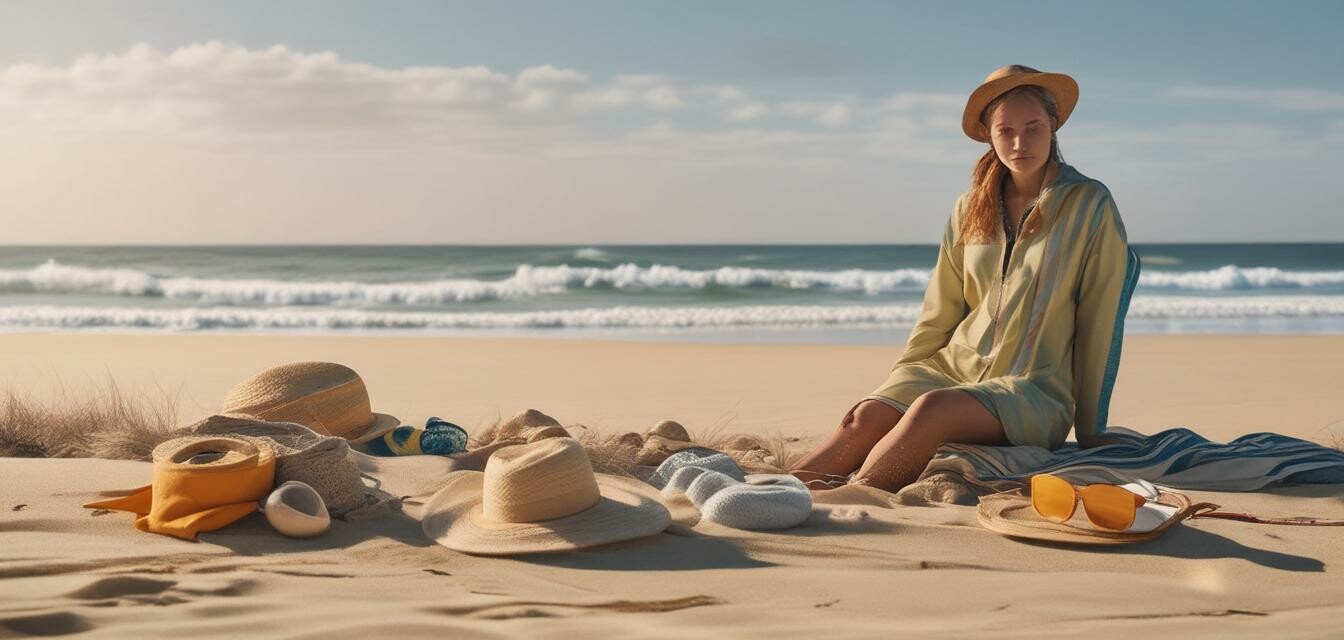
Sustainable Fashion: The Future of UV Protective Clothing
As the awareness of skin health continues to grow, so does the trend towards sustainable fashion in the UV protective clothing market. This article explores the rising popularity of eco-friendly UV clothing, addressing both fashion-forward designs and environmental concerns.
Key takeaways
- The demand for UV protective clothing is rising due to increased skin health awareness.
- Sustainable fashion practices are becoming integrated into the production of UV apparel.
- Innovative fabrics and materials enhance both style and protection.
- Consumer preferences are shifting towards eco-conscious brands.
- New designs are combining functionality with fashion.
The Importance of Sustainable UV Protective Clothing
With rising concerns over skin cancer and environmental degradation, consumers are looking for solutions that respect both their health and the planet. Sustainable UV protective clothing offers numerous advantages:
- Consistent protection: High UPF ratings (30-50+) ensure that harmful UV rays are blocked effectively.
- Environmental consciousness: Sustainable materials reduce the carbon footprint associated with traditional textile production.
- Fashion with a purpose: Stylish garments encourage regular use, enhancing everyday sun protection.
- Longevity and durability: Many sustainable fabrics are designed to last longer, proving to be cost-effective over time.
Emerging Trends in Sustainable Fabrics
Innovations in fabric technologies are pushing the boundaries of sustainable fashion within the UV protective clothing sector. Some notable trends include:
| Fabric Type | Description | Benefits |
|---|---|---|
| Recycled Polyester | Made from post-consumer plastic bottles. | Reduces waste and conserves resources. |
| Organic Cotton | Cotton grown without harmful pesticides. | Safer for the environment and the farmers. |
| Bamboo Fabric | Made from the fast-growing bamboo plant. | Biodegradable and highly breathable. |
| Hemp Fabric | A durable and fast-growing crop. | Requires less water and no pesticides. |
| Tencel | Made from eucalyptus trees using a closed-loop process. | Low environmental impact, naturally biodegradable. |
Consumer Preferences Shifting to Sustainability
As awareness about the effects of climate change grows, consumers are now favoring brands that prioritize sustainability. This is particularly prominent in the UV protective clothing market where buyers are increasingly concerned about:
- Ethical sourcing practices and transparency.
- Long-lasting products that do not harm the environment.
- Innovative designs that meet both functionality and aesthetic needs.
Many companies are now adopting eco-friendly practices, from sourcing sustainable materials to ensuring ethical labor practices.
How Brands are Incorporating Sustainability
To cater to the eco-conscious consumer, many brands are implementing sustainable strategies. Some methods include:
- Utilizing renewable energy sources in manufacturing.
- Implementing recycling programs for old clothing.
- Offering repair services to extend the lifespan of clothing.
- Creating limited-edition collections from biodegradable materials.
Pros
- Offers sun protection without the need for reapplication.
- Complies with sustainable practices, appealing to eco-conscious consumers.
- Innovative designs can inspire more regular outdoor activity.
- Durable and long-lasting, reducing waste in landfills.
Cons
- Some sustainable materials may come at a higher price point.
- Limited availability in some regions or markets.
- Performance of some sustainable fabrics may not meet traditional alternatives.
The Future of UV Protective Clothing
As fashion trends evolve, the demand for UV protective clothing combined with sustainable practices will continue to grow. The marketplace will likely see:
- Increased diversity in styles that cater to different demographics, particularly children.
- More options that blend functionality with aesthetics, appealing to fashion-forward consumers.
- Continued innovations in materials that enhance both comfort and protection.
As more consumers recognize the importance of sun protection along with sustainability, brands will continue to innovate and respond to these demands.
Conclusion
The rise of sustainable UV protective clothing represents a significant evolution in the fashion industry. By merging style with environmental responsibility, brands can meet consumer demands for both protection and sustainability. As awareness about skin health and environmental issues grows, the future looks bright for sustainable fashion in the UV protective clothing space.
For more updates on the latest trends in UV protective clothing, be sure to explore our News and Trends section.